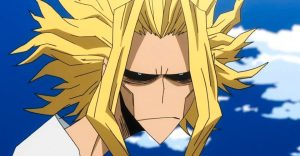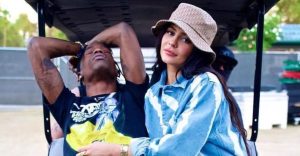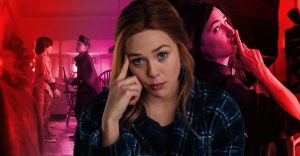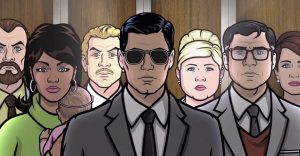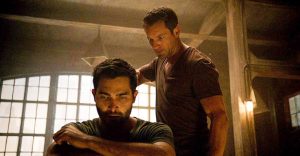10 Behind-The-Scenes Facts About The Making Of Tremors (1990)

This past January, Tremors celebrated the 30th anniversary of its U.S. theatrical release. Despite an average reception during its initial theatrical run in 1990, the beloved horror-comedy exploded in popularity once the film hit home video. As a result, Tremors spawned a six-film franchise over the three decades following its release.
In 2018, original stars Kevin Bacon and Fred Ward were poised to reprise their roles as Valentine McKee and Earl Bassett for the SyFy channel reboot of Tremors, but the studio announced they would no be moving forward with the pilot episode. As for the original, there is still plenty of trivia surrounding its production. Here are 10 behind-the-scenes facts about the making of Tremors.
10 Conception

Cowriter S.S. Wilson got the idea for Tremors while working in the California desert for the U.S. Navy. While taking a break on a large rock, Wilson imagined what it would be like if an underground predator forced him to remain there indefinitely.
Frank Herbert’s Dune has also been cited as an inspiration for Tremors. Both stories feature giant underground worms in the desert that characters avoid by seeking refuge on a large rock formation. As for early titles for the film, Beneath Perfection, Land Sharks, and Dead Silence were all considered before settling on Tremors.
9 Altered Score

During post-production, Universal felt it necessary to make a change to the film score in order to make it scarier. Composer Robert Folk was recruited at the last minute to make alterations to Ernest Troost’s original score, which was deemed too safe by the studio.
In the final cut of the film, both film scores are used. Troost’s country-western score is used during the lighter, upbeat moments in the film while Folk’s more intense compositions were used during the frightening action scenes.
8 Original Rating

Tremors originally drew an R-rating from the MPAA. Not for intense violence, but for extreme profanity. Rather than rewrite dialogue and reshoot scenes over again, creative overdubbing was used in post-production to circumnavigate the restrictive rating.
The initial cut of the film included roughly 20 F-words, many of which were uttered by Valentine (Bacon). In the final cut, Val’s profane dialogue has been replaced with lines such as “we killed that motherhumper.”
7 Deleted Character

For reasons still unknown, a character in the original screenplay was nixed before production began. The character was known as Viola, a crabby old lady who lives in Perfection, Nevada with her constantly barking Rottweiler.
Although a reclusive shut-in, Viola’s inclusion would have altered the entire beginning of the film. The original script began with Viola being attacked by an unseen Graboid that bursts through the floor of her house before murdering her out of the frame.
6 Nixed Practical Effects

Before settling on the appearance of the Graboid monsters, several methods were tested. The original idea was to show the Graboids with completely dry skin, but the glossy paint application made them appear as if covered in lacquer.
Another idea was to depict the Graboids with an outer shell. When above ground, the Graboids would withdraw its shell to reveal a smaller, slimy inner-worm. However, the phallic result prompted laughter on set. Another idea was to enable the Graboids to accurately mimic the sound, a skill they would use to bait unsuspecting victims.
5 Recycled Sound Effects

The shrill roaring sound effects of the subterranean Graboids proved so effective that they have been reused several times in a number of different movies.
Among the films to reuse the Graboid sound effects include Mosquito, Starship Troopers, Antz, most recently, Kong: Skull Island, and several others. David F. Alstadter is credited as Floey Recordist on Tremors, Ezra Dweck as the sound effects recordist, and George Simpson as the sound effects editor.
4 Props

The Graboids in Tremors were designed by American special effects house Amalgamated Dynamics. To achieve the shot of the full-scale Graboid that Val digs up in the film, the giant monster was molded from lightweight foam, buried in a trench, and excavated.
In addition, the elephant gun Burt (Michael Gross) uses in the film is an 8-gauge Darne Shotgun that producers rented from a private arms collector. In the film, the shotgun fires dummy rounds made of brass.
3 Studio Interference

At the behest of Universal, first-time director Ron Underwood was forced to add violent attack scenes early in the film to pump up the suspense. This was also done so Universal could better market the film as a monster-movie.
Initially, producers wanted to hide all signs of a monster from the audience to keep the killer’s identity shrouded. But when a push to market a monster movie took precedent, two scenes at the beginning of the film were added. The first includes Rhonda (Finn Carter) unwittingly evading a Graboid attack while walking back to her truck. The other is when Old Fred is slaughtered on his sheep farm.
2 Original Poster & VHS Art

When it came time to marketing Tremors, Universal designed a theatrical one-sheet and VHS cover art. The image would have featured a Graboid in full view. When Stampede Entertainment implored Universal to keep the monster shrouded until audiences see it for the first time in the film, the studio agreed.
As a result, a much closer image of the Graboid’s tentacle with sharp teeth was featured on the U.S. Poster and VHS cover.
1 Original Ending

The original ending of Tremors was far different than what’s shown in the final version. In the script, Valentine and Rhonda did not get together romantically, but it was something to which was heavily alluded.
As Val and Earl depart for Bixbie, they realize they left their cigarette lighter behind in Perfection. When they realize the lighter is still in Rhonda’s possession, they immediately turn and back. The implication being that Val and Rhonda link up romantically. However, the ending failed miserably during a test screening and the ending was changed to the way it’s shown in the final cut. The alternate can be found on the DVD bonus materials.










